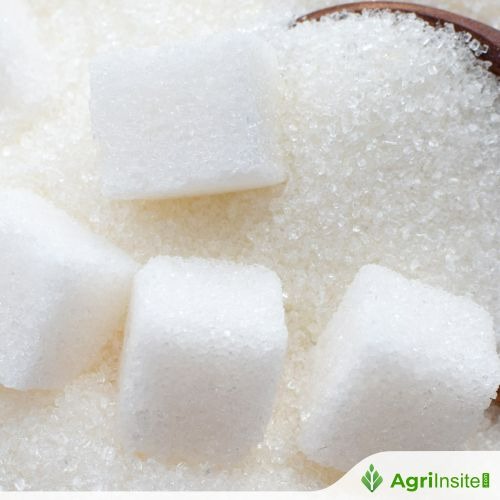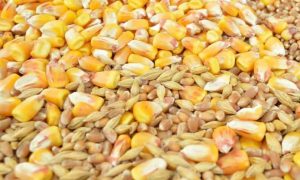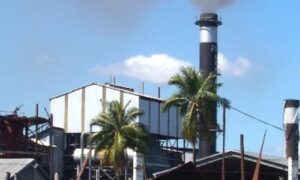Vietnam’s Sugar Industry Thrives Amid Rising Prices

Vietnam’s sugar industry is expanding in 2024/25, driven by rising prices. With 22 of 24 mills operating, production has surged, benefiting farmers and companies. Sơn La Sugar expects 550,000 tons of sugarcane, while Nghệ An’s farmland grew by 1,200 hectares. Global supply issues, including droughts in Brazil and India, have fueled price hikes, but climate risks remain a concern.
The sugar industry in Vietnam is witnessing significant changes as it enters the 2024/25 sugarcane pressing season. The Vietnam Sugar Association reported this season started officially on December 2024, with 22 out of 24 sugar mills already operational by January 2025. This surge is tightly linked to the rising price of sugar, prompting farmers and companies to ramp up production.
Among the mills preferring early production is the Sơn La Sugar Company, which commenced operations as early as February 1, 2025, right after the Tết Nguyên Đán holiday. Currently operating its maximum capacity, the company’s single production line processes about 5,200 tons of sugarcane daily. The company boasts over 9,000 hectares of contracted sugarcane fields, engaging more than 10,000 local farmers involved in sugarcane cultivation.
For the 2025 production year, Sơn La expects to harvest around 550,000 tons of sugarcane and predicts revenues to hit around 500 billion VND. This increase is reflected across the Nghệ An province, which has expanded its sugarcane farming to over 22,200 hectares—an increase of 1,200 hectares from the previous year. Nghệ An’s sugar production is ramping up sufficiently to meet the processing capabilities of its three mills.
The advantages of improved pricing have stirred widespread optimism among sugarcane farmers, especially those previously discouraged by low sugar prices, which forced many to switch to alternative crops like corn and cassava. According to the Nghệ An Agricultural and Rural Development Department, “after several years of decline, the area of raw sugarcane reached the highest this year, basically meeting the production needs of processing plants.”
This year, farmers like those from NASU Nghệ An are seeing substantial benefits. The company ensures purchasing sugarcane at prices ranging between 1.2 million to 1.22 million VND per ton, depending on the sugar content. An additional bonus incentivizes farmers to adhere to contract rules, which significantly boosts farmer incomes. Apart from this, NASU has provided financial support to local farmers over the past three years, allocating hundreds of billions of VND for investment without interest.
Similarly, farmers from Phú Yên province have also picked up their harvesting efforts with increased enthusiasm; they are currently harvesting yields around 70 tons per hectare. Thanks to favorable weather conditions, this year’s campaign is expected to yield significantly higher production, leading to profits averaging between 30 to 40 million VND per hectare for farmers, as per the Phú Yên Agricultural and Rural Development Department.
Across various regions, including the Nam Trung Bộ and North Central areas, businesses like KCP Vietnam Industries and Tuy Hòa Sugar Company are tirelessly working to secure raw sugar supplies. KCP has invested 500 billion VND to provide farmers with interest-free loans and has directly contracted with about 2,000 sugarcane-growing farmers to reinforce the local economy.
Nevertheless, these optimistic trends stem from broader global market dynamics influenced by fluctuated sugar supplies. Due to adverse climatic conditions, countries like Brazil—the world’s largest sugarcane producer—are grappling with droughts affecting their output. Meanwhile, India is experiencing significant reductions, with estimates indicating up to 14.7% drop for the year 2024-2025. States like Maharashtra have had to shut down many sugar mills early due to insufficient sugarcane supply. According to B.B. Thombare, President of the Indian Sugar Mills Association, “a drought last year severely impacted sugarcane productivity.”
With such global supply interruptions, the Vietnam Sugar Association forecasts continued elevated sugar prices driven by rising demand, particularly from emergent markets like Pakistan and Indonesia. This development raises consumer expectations amid increasing demand for sugar across various sectors, including food and beverages.
Despite this optimistic picture, the association warns of potential challenges influencing the upcoming 2025/26 sugarcane season. Climate phenomena like La Niña threaten to disrupt production with substantial rain and flooding possibilities for sugar-producing areas, particularly affecting the northern and central regions of Vietnam.
Clearly, the interplay of local demand with global supply challenges will dictate the future of the sugar industry within Vietnam. While the present seems promising, awareness of potential climatic threats points to the importance of strategic planning to sustain the momentum achieved during this pressing season.
To read more about Sugar Industry continue reading Agriinsite.com
Source : THE PINNACLE GAZETTE















